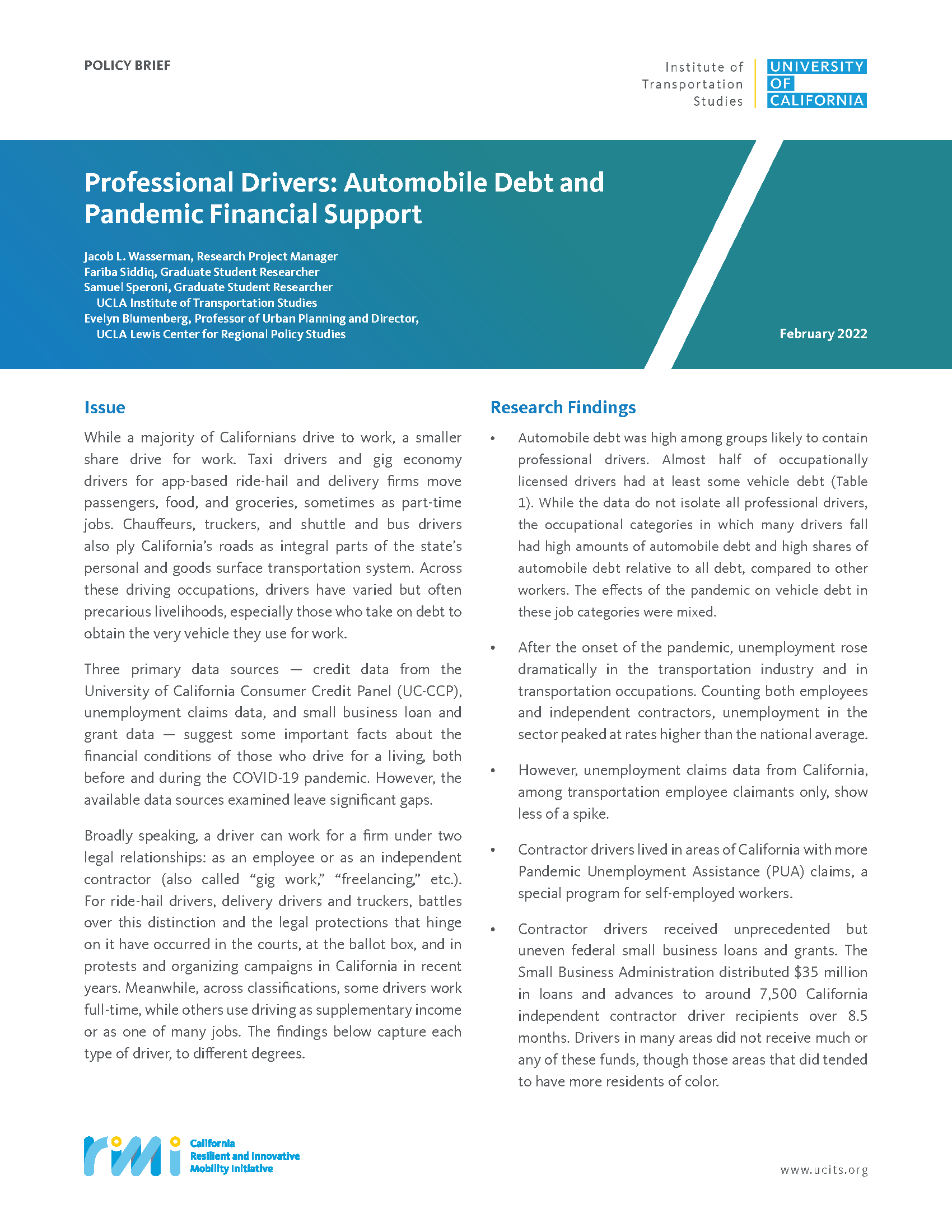Professional Drivers: Automobile Debt and Pandemic Financial Support
Date: February 8, 2022
Author(s): Jacob L. Wasserman, Fariba Siddiq, Samuel Speroni, Evelyn Blumenberg
Abstract
While a majority of Californians drive to work, a smaller share drive for work. Taxi drivers and gig economy drivers for app-based ride-hail and delivery firms move passengers, food, and groceries, sometimes as part-time jobs. Chauffeurs, truckers, and shuttle and bus drivers also ply California’s roads as integral parts of the state’s personal and goods surface transportation system. Across these driving occupations, drivers have varied but often precarious livelihoods, especially those who take on debt to obtain the very vehicle they use for work.


